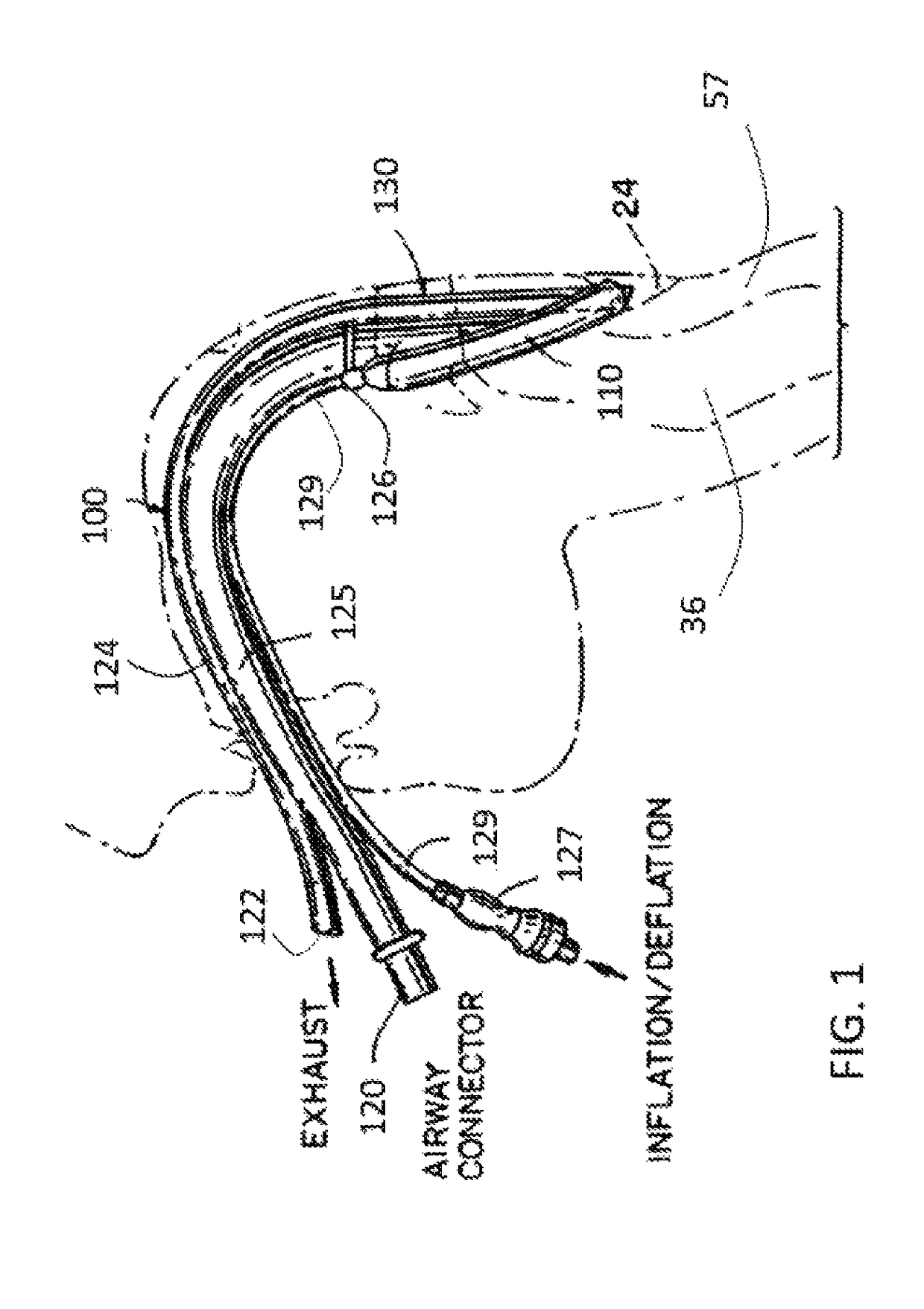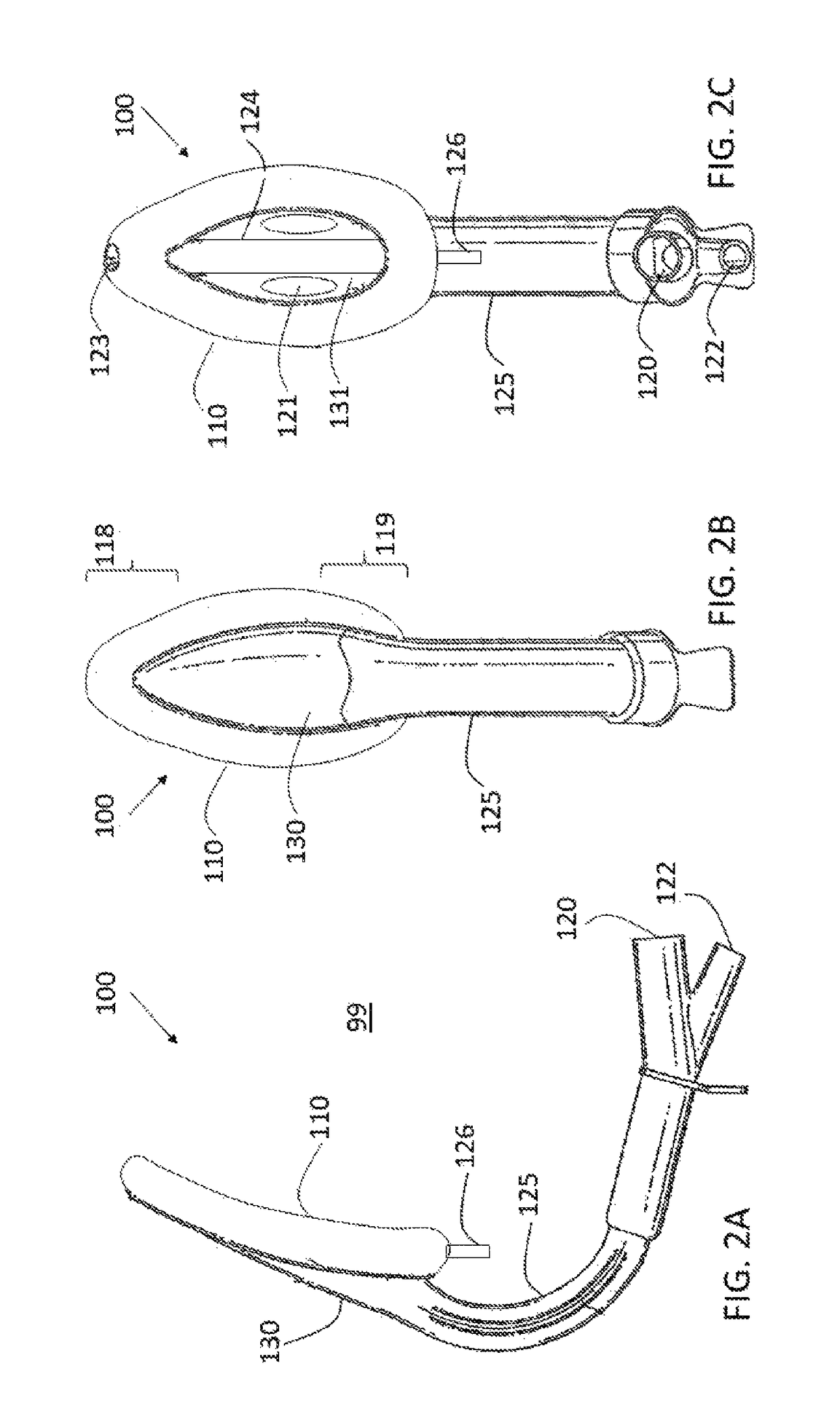Laryngeal mask cuff
a technology of cuff and laryngeal mask, which is applied in the field of lung ventilation devices, can solve the problems of increased cuff pressure, increased cuff pressure, and lingual palsy of the lingual, hypoglossal, and recurrent laryngeal nerves, and achieves good tissue conformity, low sensitivity to cuff inflation volume variations, and good sealing
- Summary
- Abstract
- Description
- Claims
- Application Information
AI Technical Summary
Benefits of technology
Problems solved by technology
Method used
Image
Examples
Embodiment Construction
[0095]FIG. 1 is a schematic illustration of a laryngeal mask airway (LMA) device 100, in accordance with an application of the present invention. In typical use, LMA device 100 is inserted into the throat while deflated (the upper surface of the throat is bounded by hard and soft palates). LMA device 100 is lodged in the pharynx at the base of the hypopharynx where the throat divides into the trachea 36 and the esophagus 57. Typically, after LMA device 100 is thus lodged in the pharynx, an inflatable annular cuff 110 of LMA device 100 is inflated at the inserted location with the patient, as illustrated in FIG. 1.
[0096]Reference is still made to FIG. 1 and is additionally made to FIGS. 2A-C, which are schematic illustrations of respective views of LMA device 100 with cuff 110 inflated to a working medium volume, as described hereinbelow with reference to FIGS. 5A-B, in accordance with an application of the present invention. FIGS. 2A, 2B, and 2C are side, posterior, and anterior vie...
PUM
 Login to View More
Login to View More Abstract
Description
Claims
Application Information
 Login to View More
Login to View More - R&D
- Intellectual Property
- Life Sciences
- Materials
- Tech Scout
- Unparalleled Data Quality
- Higher Quality Content
- 60% Fewer Hallucinations
Browse by: Latest US Patents, China's latest patents, Technical Efficacy Thesaurus, Application Domain, Technology Topic, Popular Technical Reports.
© 2025 PatSnap. All rights reserved.Legal|Privacy policy|Modern Slavery Act Transparency Statement|Sitemap|About US| Contact US: help@patsnap.com



